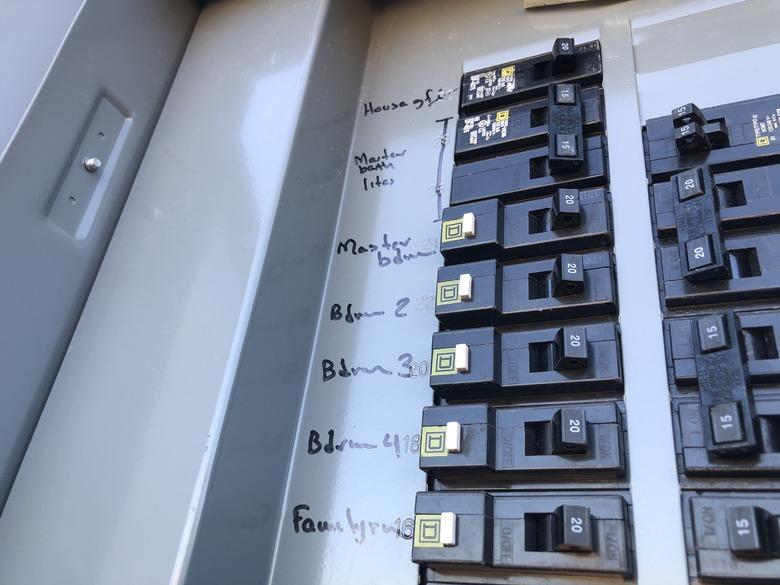How To Turn Off The Circuit Breaker For A Smoke Alarm
When a battery-powered smoke detector starts to beep — or if it sounds a false alarm — you can get it to stop by removing the battery. This is not so for a hardwired smoke detector. It also has a battery, but the battery is there just as a backup. The real power comes from the electric circuit to which the smoke detector is connected, and if you want the device to stop making noise, you have to disconnect it from the circuit.
There are two ways to do this. The first is to dismount the alarm and disconnect the wires, and the second way is to shut off the circuit breaker, which may be necessary if the detector is part of a network, and all the alarms are sounding at once. Shutting off the breaker should quiet the alarm, but it may sound again when you flip the breaker back on if certain conditions are creating a false alarm.
Which Is the Right Breaker?
Which Is the Right Breaker?
If your electrical panel has been properly indexed, you should see a list matching each breaker to the circuit it controls, so all you have to do is find the one for the alarm system and flip it off. If your panel hasn't been indexed, which is common, you pretty much have to resort to trial and error. Flip each breaker off until you find the right one — but how will you know?
The first indication is that if the alarm is still sounding, it will stop. If you pressed the hush button and the alarm isn't making noise, have a helper watch the LED on the device while you turn off breakers and have that person alert you when the LED goes out. The device is still getting power from the battery until you remove it — and if it's a sealed unit, you can't remove the battery — so it may start to make noise after the silent period afforded by the hush button expires. If so, you may need to reset it.
What Causes False Alarms?
What Causes False Alarms?
The first rule of smoke detectors is to suspect a fire when you hear an alarm. Only after determining that there is no fire should you press the hush button, remove the battery, flip off the breaker, and start looking for conditions that could cause a false alarm. They include:
- Steam in the air from the shower or the kitchen that the smoke detector has mistaken for smoke.
- Dust in the air from a dirty heat register or some other source. Dust may have collected on the sensor inside the device. If you suspect this, blow canned compressed air through the sensor grille to clear it away.
- Actual smoke from the kitchen. This probably means the device is too close to the kitchen and should be relocated.
- High humidity. Some smoke detectors are so sensitive that they even interpret humid air as smoke. You may need to run a dehumidifier to remedy this situation.
How To Reset a Smoke Detector
How To Reset a Smoke Detector
If your hardwired smoke detector has a removable battery, the usual procedure for resetting it after it begins chirping or if it sounds a false alarm is as follows:
- Turn off the circuit breaker.
- Remove the battery.
- Press the hush button on the front of the cover and hold it in for 15 seconds.
- Reinstall the battery and turn the circuit breaker back on. The unit may chirp once when you do this.
If you have a sealed smoke detector, you should consult your owner's manual for the procedure to reset it. Depending on the model, it may or may not be the same procedure used for models with removable batteries.
Kidde sealed smoke detectors can be permanently disabled. To do this, dismount the device, disconnect it, and turn it over. You'll see a label with arrows pointing to a screw hidden underneath it. Break through the label with a screwdriver and turn the screw to the off position indicated on the label. You can't undo this, so you have to replace the smoke detector.
